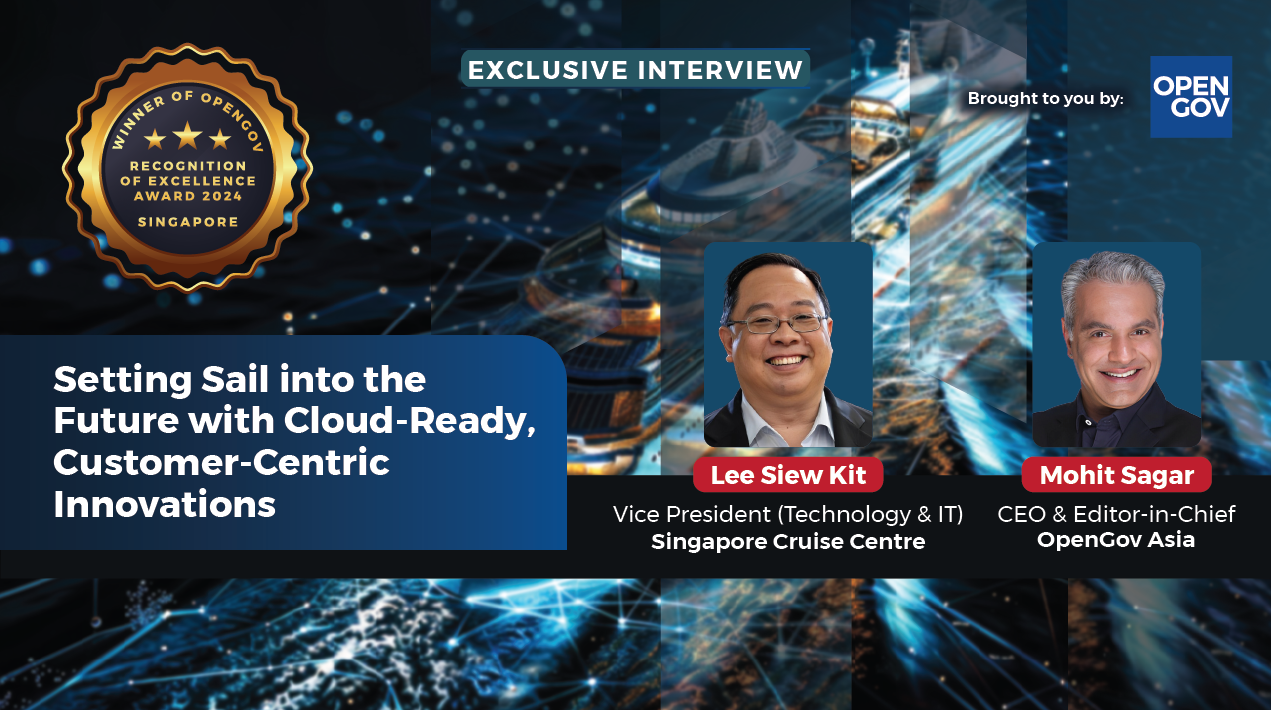
Around 99.5% of Thailand’s 67 million population enjoys health protection coverage. Majority of it, nearly 70%, is provided by the public sector. Universal Health Coverage was launched in 2002, leading to falls in infant and child mortality and rise in life expectancy. Thailand has good healthcare indicators, compared to peers. IT has played a crucial role in these developments.
OpenGov speaks to Dr. Polawat Witoolkollachit, Director of Information Technology and Communication, Ministry of Public Health, Thailand to learn about the journey till now and the path ahead. He has been involved in many public health related IT projects, including the setting up of an inter-connected data centre network across Thailand.
Could you please describe your current areas of focus?
In the next three years, our focus is on E-Health strategy and adapting it to our policy. We follow the World Health Organisation (WHO) guidelines. The WHO has the Health Systems Framework, which consists of six building blocks. Their main objective is to improve the delivery and quality of healthcare to the people. Some of these blocks involve the use of health information technology to improve health care.
In 2013, WHO announced an E-health framework, focusing on the use of ICTs to attain universal health coverage. Subsequently, Thailand also adopted it.
Now we are in the phase of implementing the E-health policy in our healthcare system.
What are the projects your department is working on?
Our department is involved in many projects about developing the infrastructure of health IT in Thailand. First, we try to get our service units in place. We have over 10,000 units all over Thailand, connected together. The connection was completed 2 years ago.
Now, every single unit in Thailand can send and receive information from the Ministry of Public Health (MPH). We can monitor and deliver the report of the individual service units, tracking the quantity and quality of services delivered.
We have about 76 provincial health offices. Every provincial health office has their own data centre. They are connected to each other and to the central data centre. After we implemented health data centres, we have to implement big data tools (Axis MOPH: Bigdata project). When we collect the data from all the provincial units and try to get a holistic view, we need to use big data analytics. To manage the data at the ministry level, we are using big data servers.
Can you please give some examples of big data use in public health sector in Thailand?
If we want to get a report from some province, now we can easily access a pre-prepared report on regular matters of interest, we can get the result instantly (http://hdcservice.moph.go.th). If we want to know something different from the regular issues, we use our big data server to retrieve that information.
For example, earlier if we wanted current statistics on pregnancies, you would have to call and get the data from every province and tie it all together into a report. With big data, you can get the information in nearly real-time. It is almost instant, taking less than 30 minutes.
Previously, we were trying to find how many Outpatient department (OPD) cases we had from January till now. Even after the implementation of provincial data centres, we had to go to every data centre, submit the query and collate the results. Now we can go to the AXIS big data server, and get the instant report.
What kind of training program was used for enabling stakeholders to utilise data centres?
We have a 3 level training structure. The first one is for the users at the ground level. They are trained to use the Health Data Centre Service to generate regular reports.
Users in the service units all over Thailand are trained, so that they can use their health data centre reports and compare them to others. They can also check the history of their actions and numbers.
The second rung of training is for administrators at the provincial level. They can monitor the data, extract any data they need from the provincial data centres, and check its integrity before sending it to the ministry.
The third one is for administrators at the ministry level. We train them how to use the data.
Because Thailand has health care service data sets from 20 years, now we have the fourth generation of data sets, administrators at the ministry level can analyse the data. They can check gaps and defects in the data and work towards making it complete. They are also taught and trained how to use big data.
Earlier, we never know the impact of a policy till we were done, or at least till the end of the year. Now, we can monitor what’s going on.
How do you evaluate the success of these projects?
The key to success for us is the number of users and the number of reference reports they generate using our service. As you know, if we implement advanced technology applications but if they don’t use it, then it is futile. There is no value go it. Finally, if people do not use it saying it is unreliable, then it is a failure of the system.
But our systems are becoming more popular day-by-day because reports from our applications are being widely used to monitor and evaluate results.
Can you please give some examples of the use of big data in public health care in Thailand?
In referral cases, when a patient is sent to a specialist hospital, they don’t need to re-enter the data at the hospital. The patient does not need to answer the same questions over and over again. We can identify the people and send some of the personal data through our systems to the other hospital.
The information transferred is kept within the bounds set by our laws. We can use our product to connect to the Ministry of Interior in order to check the integrity of data. When we want to do something with personal information of the patient, we have to authenticate the data first, check the identity of the persons.
Thailand is different from other countries in the region, because nearly 80% of the 67 million population of Thailand rely on the public healthcare system and we have Universal Health Coverage. This makes us the family service provider for any citizen in Thailand. So, we have to take care of more citizens, compared to other countries. Private sector handles less than 35% of total health services.
What is the next step for IT in the Thai health care system?
The next step we are looking to is a Health Information Exchange (HIE) for personal health records. It is our goal to achieve that in the next three years. If you have health problems while living in one province, and then you move to another province, your record is not moveable. You have to ask them to send the record to the other hospital where you are using the service at present. With the HIE, the information of Thai citizens can follow them anywhere in Thailand.
There are several by-products or side-benefits of centralised personal health records. You can use it for administration, you can use it to improve health care services, citizens can use it for their own health-related purposes.
Without personal records system, medical history is very difficult to access. You might not remember something for your own child, from when they were young. You might not know something related to your parents.
If you can monitor yourself, then it good for the overall health care system. If you can do more prevention, it will reduce costs for the system in the long term.
We have a Personal Health Records Board. It also includes many of the health care providers and all professional councils. Participation is voluntary but they are all coming together to make it happen, to make the HIE a reality.
In relation to centralised personal health records, there is a lot of concern over cybersecurity? How are you managing those risks?
We include the Attorney General and representatives from the ETDA (Electronic Transaction Development Agency) in the working council. We factor in security in the design and planning. This gives us confidence that we can establish a secure HIE.
What are the key challenges in ICT-related projects in the public health sector?
The key is always leadership. First is leadership, which flows into strategy and policy, and then comes collaboration between stakeholders.
Leadership has to be aligned with the people, with the citizens in Thailand, with their needs. Communication needs to happen with every level of top leadership and administrators, regarding the importance of IT and what we need to do in the next few years.
External pressure by the people and internal pressure within the government will move Thailand towards not just a digital healthcare sector but also a digital government and digital economy.
















